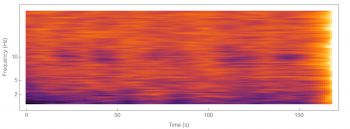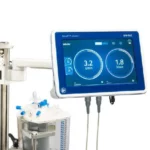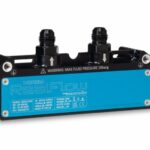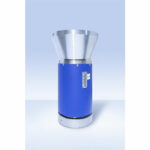
A team of scientists at the University of Sussex have built a modular quantum brain scanner, and used it to record a brain signal. This is the first time a brain signal has been detected using a modular quantum brain sensor anywhere in the world.
It’s a major milestone for all researchers working on quantum brain imaging technology. The sensors are modular devices that can be connected together and scaled up. The team have connected two sensors like ‘Lego bricks’ proving that there is the potential for whole-brain scanning using quantum technology in the near future, offering potential advances for neurodegenerative diseases like Alzheimer’s.
The device, which was built at the Quantum Systems and Devices laboratory at the university, uses ultra-sensitive quantum sensors to pick up tiny magnetic fields to see inside the brain in order to map the neural activity.
The team applied the sensors to the outside of a participant’s scalp, close to the visual cortex of the brain. They asked the participant to open and close their eyes at 10-20 second intervals, and were able to detect a signal. Although a seemingly simple action, to see it happening inside the brain from the outside requires hugely sophisticated quantum technology.
Thomas Coussens, a PhD student at the University of Sussex who built the sensor, explains, “Our quantum sensor has to be exceptionally sensitive to pick up the magnetic fields in the brain which are very weak indeed. To put it into context, the magnetic field of a brain is a trillion times lower than that of a fridge magnet.
“Because our device is so-far unique in that it is modular – and we’ve shown the modularity works by connecting two sensors together – we now plan to scale up this project by building more sensors to turn this into an entire brain imaging system. This could provide significant advancements in detecting and delivering treatment for neurodegenerative diseases such as Alzheimer’s.”
The quantum magnetic sensor uses an optically pumped magnetometer inside a magnetic shield to reduce environmental magnetic fields and ensure they are not being detected. In simple terms, the sensor works by putting a vapour into a quantum state, shining a laser beam through it and using a photo detector to see how much light has gone through. How the atomic vapour interacts with the laser light very sensitively depends on the magnetic field. The tiny electric currents in the neurons in the brain lead to very small magnetic fields even outside the brain, which is what the sensor picks up.
“As our sensor works on a modular basis, we will now be able to scale it up to create much more detailed images of the brain or parts of the brain. You can’t do that with the current commercial product available,” said Professor Peter Krüger, Experimental Physicist and Director of the Sussex Programme for Quantum Research at the University of Sussex.
“This new sensor built at the University of Sussex opens the door for U.K.-produced quantum sensors, hugely important in the wider U.K. quantum technology landscape.”
The team involved in the research and development of the sensor are Professor Peter Krüger, Thomas Coussens, Dr Christopher Abel, Katerina Gialopsou, Dr Mark Bason, Professor Mara Cercignani, Fedja Orucevic and Dr Tim James.






